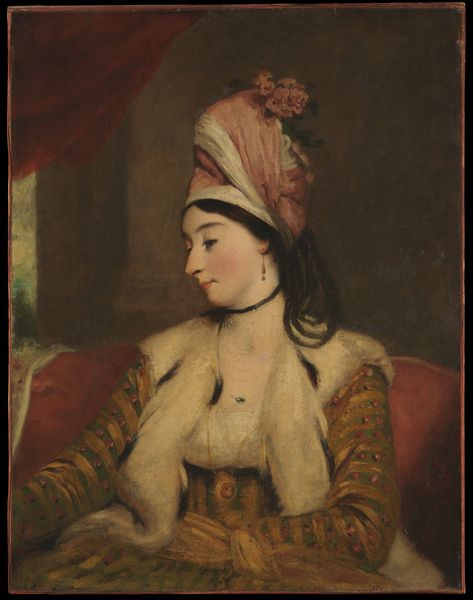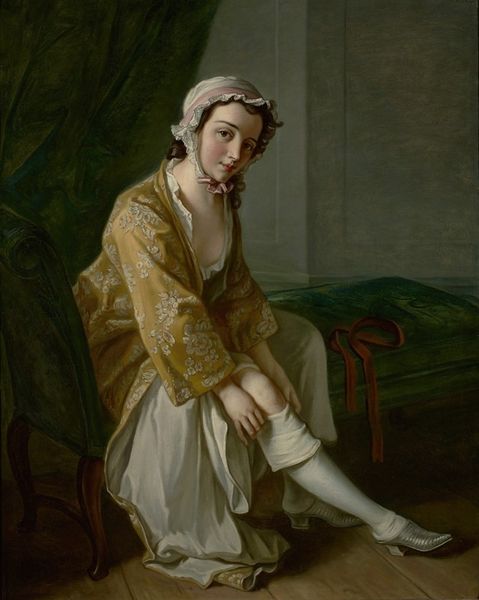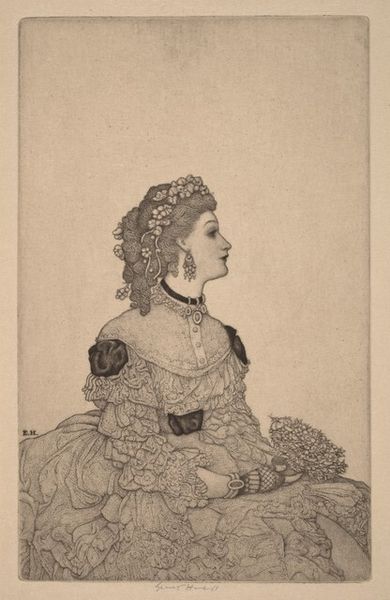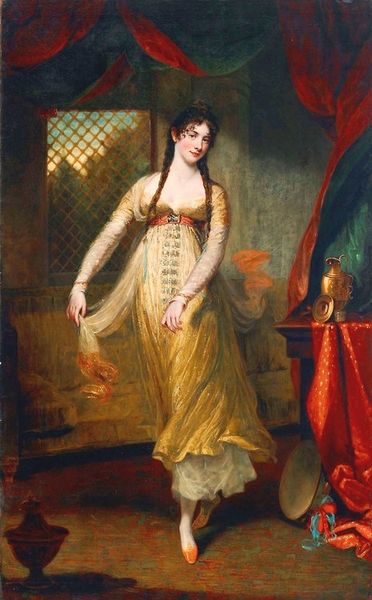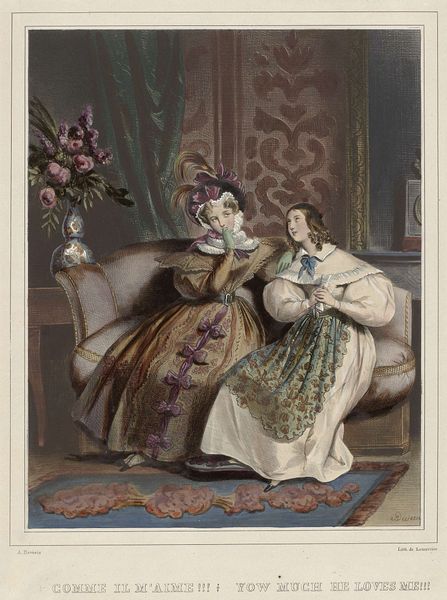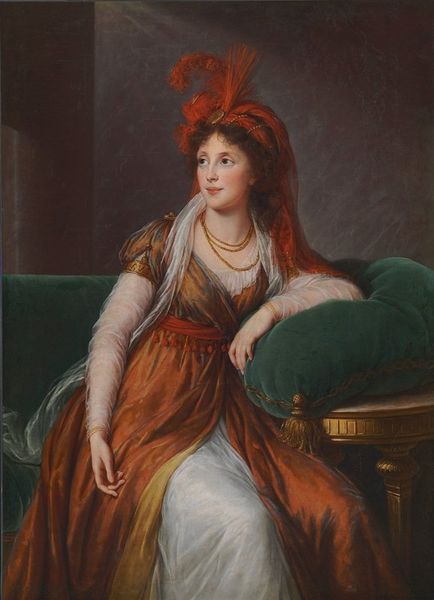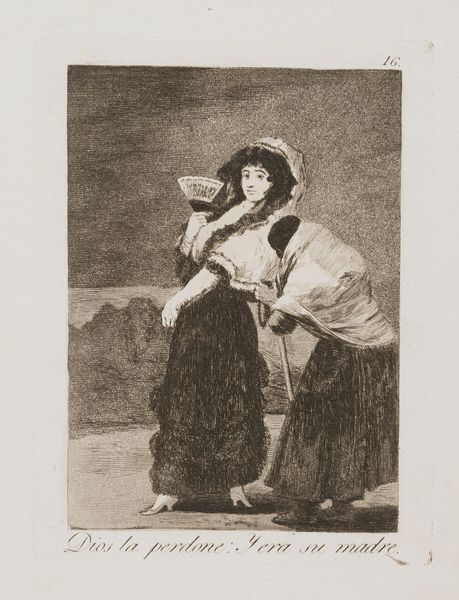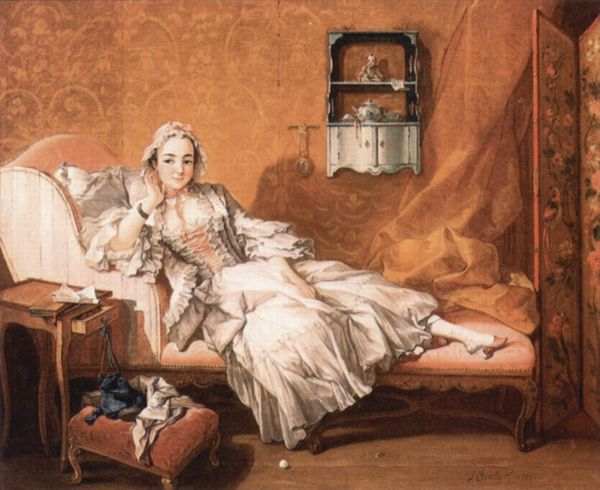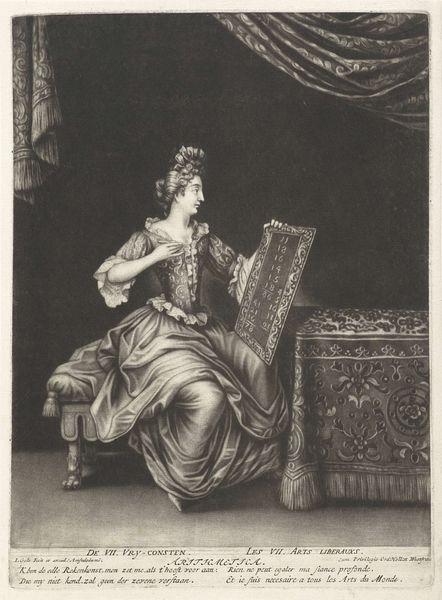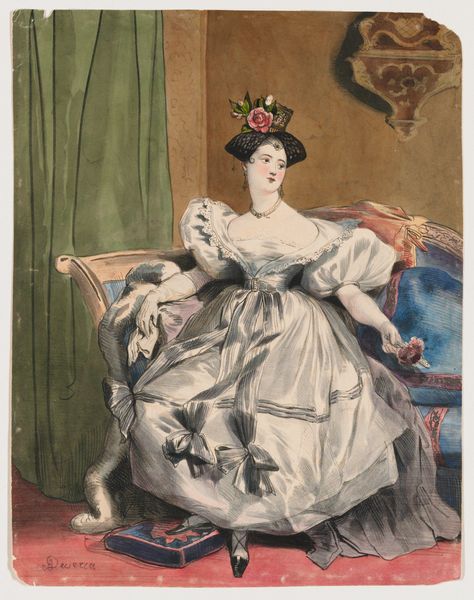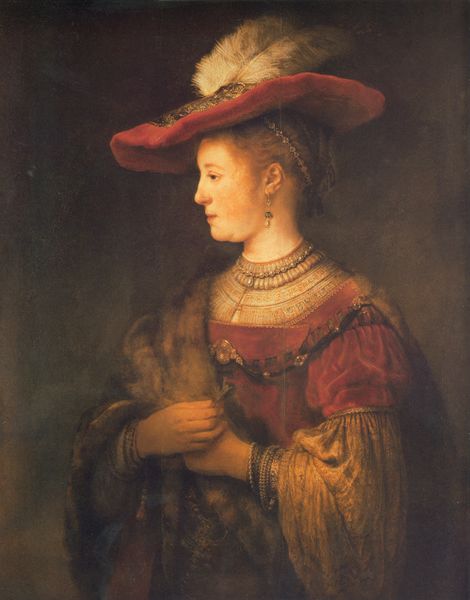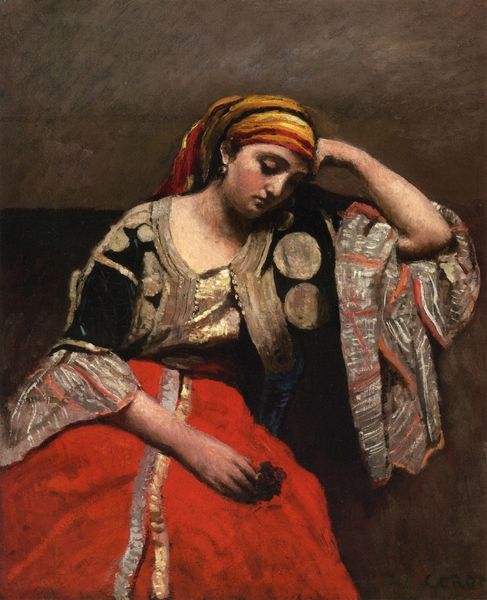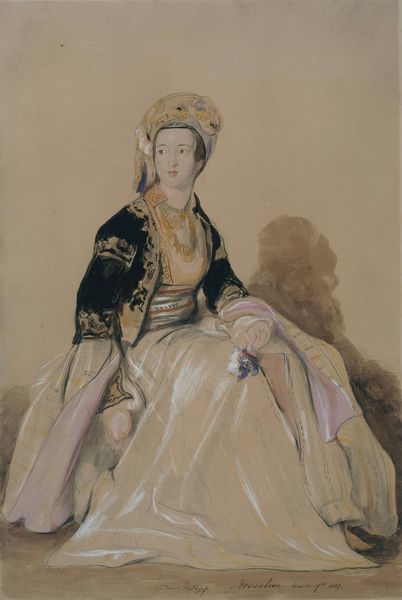
Dimensions: 137 x 110.5 cm
Copyright: Public domain
Curator: Reynolds's "Mrs. Baldwin," painted in 1782, depicts its subject in an intriguing state of repose, seemingly detached from her surroundings. What are your immediate impressions? Editor: It’s immediately striking how heavily styled she is. Almost theatrical, and I’m immediately wondering about the purpose of that styling and its relationship to both gender and cultural appropriation in this moment in history. It all feels very posed, very performative. Curator: Precisely. This Romanticism-era portrait utilizes the genre-painting style to depict Mrs. Baldwin adorned in what appears to be Turkish-inspired clothing, reclining on a vibrant red sofa. Reynolds, as were many artists of his day, was fascinated by representing the Orient, filtered, of course, through a Western lens. Editor: Yes, that “Orientalist” gaze is heavy here. It raises a number of critical questions about cultural exchange versus cultural theft, doesn’t it? And what does it say about Mrs. Baldwin herself that she participates in this display? Her agency within the historical moment is certainly complex. Was this meant to signal cosmopolitanism, perhaps? Or simply wealth and access to exotic goods? Curator: Considering the socio-political climate of the late 18th century, it’s likely a combination of both. England was expanding its global influence, including trade relationships with the Ottoman Empire, which would have fostered a fascination and idealization of Turkish culture among the British elite. Representing oneself in Turkish dress could be seen as a display of worldliness. The painting exists, you see, within the wider political, social, and economic world. Editor: And I imagine Reynolds was certainly aware of that political subtext, crafting an image not only of an individual but of England’s burgeoning global power. There's something about the studied casualness of her pose, her almost dismissive gaze, that speaks volumes about power dynamics. It makes me think about contemporary discourse on representation and who gets to tell whose stories. Curator: Indeed. Through the lens of art history, we understand how images reflect and shape society, prompting questions about ethics and interpretations. Editor: This image serves as a valuable lens through which to view intersectional issues that still plague contemporary Western society.
Comments
No comments
Be the first to comment and join the conversation on the ultimate creative platform.
